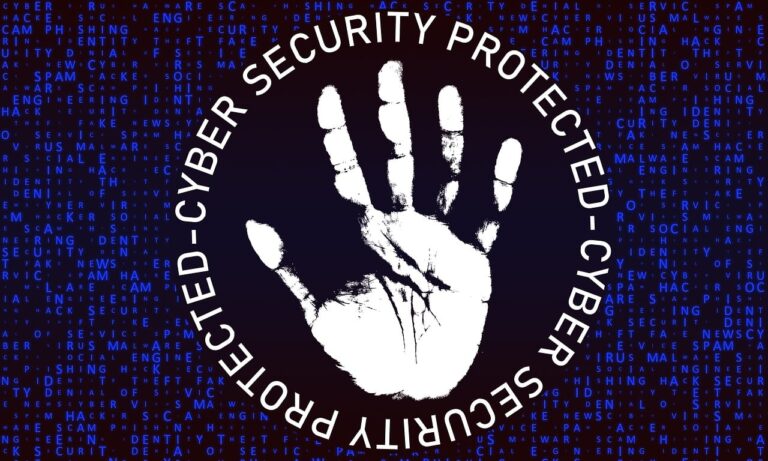Why Is Mobile Device Management (MDM) Crucial?
In today’s interconnected world, where mobile devices have become an integral part of our daily lives, the importance of Mobile Device Management (MDM) cannot be overstated. MDM plays a crucial role in ensuring the security, efficiency, and productivity of these devices. With an increasing number of businesses relying on mobile devices for their operations, it has become imperative to have a comprehensive MDM solution in place. Whether it is protecting sensitive data, managing device settings, or enforcing security protocols, MDM provides the necessary tools to streamline device management and maximize their potential. So, why is MDM crucial? Let’s explore the reasons behind its significance.
The Importance of Mobile Device Management
Mobile Device Management (MDM) is crucial to the success and security of modern businesses. With the increasing reliance on mobile devices in the workplace, it has become essential to effectively manage and secure these devices to protect valuable business data and networks. In this article, we will explore the various reasons why MDM is so important and the specific ways it helps businesses stay secure and productive.
Securing Business Data and Networks
One of the primary reasons why MDM is crucial is its ability to secure business data and networks. Mobile devices, such as smartphones and tablets, often contain sensitive information that, if accessed by unauthorized individuals, can pose a significant risk to the company’s security. MDM allows businesses to control access to sensitive information by implementing security policies and user authentication measures. This ensures that only authorized individuals can access important data, protecting it from potential breaches.
Additionally, MDM enables businesses to encrypt data in transit and at rest. Encryption is a vital security measure that ensures that even if data is intercepted, it remains unreadable and unusable by unauthorized individuals. By implementing encryption protocols on mobile devices, businesses can protect their data from being accessed or manipulated by external threats.
Protecting against Cyberthreats
In today’s digital landscape, cyberthreats are a constant concern for businesses of all sizes. Mobile devices are increasingly targeted by cybercriminals as a way to gain unauthorized access to companies’ networks and sensitive data. MDM plays a critical role in protecting businesses against these cyberthreats.
By implementing comprehensive endpoint security measures, MDM enables businesses to detect and prevent malware infections on mobile devices. It also monitors devices for any anomalies, such as unusual network activity, and blocks suspicious behavior to prevent potential attacks. Furthermore, MDM educates users about phishing and social engineering attacks, equipping them with the knowledge to identify and mitigate these threats.
Ensuring Compliance and Data Privacy
Compliance with data protection regulations and ensuring data privacy is a legal and ethical responsibility for businesses. MDM helps organizations meet these requirements and maintain the privacy of their customers and employees’ information.
With MDM, businesses can manage the storage and access of personal and confidential data effectively. They can enforce compliance with data protection regulations by implementing security policies that align with industry standards. MDM also enables businesses to audit and report device usage, ensuring they have a clear understanding of how data is being handled and accessed. Additionally, MDM provides security protocols for securing data during device disposal or replacement, reducing the risks of data breaches during these processes.
Enhancing Productivity and Efficiency
Efficiency and productivity are vital components of a successful business. MDM enables businesses to streamline processes and optimize workflows, resulting in increased productivity and efficiency.
One way MDM achieves this is through simplifying application deployment and updates. With MDM, businesses can remotely manage the installation and updates of essential business applications on mobile devices, ensuring that employees have access to the latest tools and functionalities. This reduces the time and effort required for manual installation and updates, allowing employees to focus on their tasks and responsibilities.
Furthermore, MDM enables remote access to business resources, providing employees with the flexibility to work from anywhere. Employees can securely access files, documents, and applications remotely, eliminating the need for them to be physically present in the office to perform their tasks. This not only increases productivity but also promotes work-life balance.
Another significant benefit of MDM is optimizing device performance and battery life. By monitoring and managing device settings, MDM ensures that devices are functioning at their best, preventing any performance issues that could hinder employee productivity. MDM also facilitates seamless data synchronization, allowing employees to access their work across multiple devices without interruptions or inconsistencies.
Lastly, MDM fosters collaboration and communication by providing employees with tools that facilitate effective teamwork. Features such as shared calendars, instant messaging, and video conferencing enable employees to collaborate more efficiently, resulting in improved productivity and innovation.
Managing Device Inventory
For businesses that deploy a large number of mobile devices, efficiently managing device inventory is essential. MDM simplifies this process, allowing businesses to maintain an up-to-date inventory of devices and effectively track device usage and ownership.
With MDM, businesses can keep track of all mobile devices under their management. This inventory includes details such as device model, serial number, and assigned employee. By having a central record of devices, businesses can easily identify any missing or stolen devices, minimizing the risk of data breaches.
MDM also helps manage device service contracts and warranties. It keeps track of device expiration dates, enables proactive renewals, and ensures devices are covered under necessary maintenance agreements. Additionally, MDM identifies any rogue or unauthorized devices that may have been connected to the network, helping businesses maintain the security of their network infrastructure.
Streamlining Device Provisioning and Configuration
Device provisioning and configuration can be a time-consuming and complex task for businesses, especially when dealing with a large number of devices. MDM simplifies this process, allowing businesses to automate device enrollment and onboarding, configure device settings and restrictions remotely, and ensure consistent device configuration standards.
By automating enrollment and onboarding, businesses can streamline the process of setting up new devices for employees. This eliminates the need for manual configuration and reduces the time required for device setup, allowing employees to start using their devices quickly and efficiently.
Moreover, MDM enables businesses to configure device settings and restrictions remotely. Administrators can remotely manage device configurations, ensuring that all devices adhere to organizational policies and standards. This includes setting up security measures, such as passcodes or biometric authentication, and implementing restrictions on certain device functionalities.
Consistency in device configuration standards is crucial for security and productivity. MDM ensures that all devices have standardized settings and configurations, preventing any discrepancies or vulnerabilities. This consistency also reduces the complexity of managing a variety of device models and software versions within an organization.
Enabling Remote Troubleshooting and Support
A common challenge for businesses is providing efficient troubleshooting and support for mobile devices, especially when employees are working remotely. MDM addresses this challenge by enabling remote device control and screen sharing, troubleshooting device issues and errors, providing remote application support and updates, and resetting device passwords and unlocking.
With MDM, IT support teams can remotely access and control devices to diagnose and resolve issues. They can also share screens with employees, allowing them to guide users through troubleshooting steps or demonstrate how to use specific applications. This remote support capability saves time and resources, as support personnel can resolve problems without needing to be physically present with the device.
Additionally, MDM enables remote application support and updates. IT teams can push updates and troubleshoot applications remotely, ensuring that employees have the latest versions and resolving any issues that may arise.
In situations where employees forget their device passwords or get locked out of their devices, MDM allows administrators to remotely reset passwords or unlock devices. This eliminates the need for employees to bring their devices to the IT department, minimizing downtime and disruption to their work.
Monitoring and Analyzing Device Usage and Performance
Gaining insights into device usage and performance is essential for businesses to optimize resource allocation, identify issues, and make informed decisions. MDM provides businesses with the ability to monitor and analyze device usage patterns and user behavior, analyze device performance metrics and health data, identify opportunities for optimization and resource allocation, and generate usage and performance reports.
With MDM, businesses can Track device usage patterns and user behavior. This includes details such as the time spent on certain applications, the frequency of device usage, and data consumption patterns. These insights can help businesses analyze employee productivity, identify any inefficiencies or potential risks, and make informed decisions to improve overall performance.
MDM also allows businesses to monitor device performance metrics and health data. This includes parameters such as battery life, connectivity status, and system performance. By analyzing this data, businesses can proactively address any issues that could affect device performance or employee productivity. They can identify devices that require maintenance or replacement, optimize resource allocation, and ensure that employees have devices that are functioning optimally.
Through monitoring, analyzing, and generating usage and performance reports, businesses gain valuable insights into their mobile device environment. These reports provide a comprehensive overview of device usage, performance, and trends, enabling businesses to make data-driven decisions that drive efficiency and productivity.
Implementing Effective App Management
Mobile applications play a crucial role in modern business operations, and managing these applications effectively is essential to ensure security and productivity. MDM provides businesses with the tools and capabilities to implement effective app management strategies.
With MDM, businesses can centrally manage the deployment, installation, and updating of applications on mobile devices. This ensures that employees have access to the necessary applications for their work and that these applications are up to date with the latest features and security patches.
MDM also enables businesses to enforce app restrictions and permissions based on user roles and responsibilities. Administrators can control which applications are allowed or prohibited on devices, ensuring that only approved and secure applications are used within the organization.
Furthermore, MDM allows businesses to remotely remove or disable applications from devices, which is particularly useful when an employee leaves the company or when an application poses a security risk. This capability ensures that only authorized applications are present on devices, minimizing the potential for vulnerabilities and unauthorized access.
Supporting Bring Your Own Device (BYOD) Policies
The Bring Your Own Device (BYOD) trend has gained popularity among businesses as it allows employees to use their personal devices for work. However, implementing BYOD policies brings unique challenges and security risks. MDM supports businesses in managing these risks and ensuring a secure and productive BYOD environment.
By separating personal and work data on employee devices, MDM helps protect sensitive business information from potential breaches. It ensures that personal data and work-related data are segregated, minimizing the risk of unauthorized access or accidental sharing of sensitive information.
MDM also enforces security and compliance policies on employee devices. This includes implementing measures such as encryption, passcodes, or biometric authentication to protect devices and data. It also ensures that devices are up to date with security patches and prevents the installation of unauthorized or malicious applications.
Additionally, MDM helps businesses manage employee privacy concerns surrounding BYOD. It allows businesses to define clear policies regarding the type of data that can be accessed or monitored, ensuring that employee privacy is respected while maintaining the necessary security measures.
Furthermore, MDM provides secure access to corporate resources for BYOD users. Employees can securely connect to company networks, access files and applications, and collaborate with colleagues, regardless of the device they are using. This flexibility promotes employee productivity and satisfaction, as they can work with their preferred devices while maintaining the necessary security standards.
In conclusion, mobile device management (MDM) is crucial for businesses of all sizes. From securing business data and networks to protecting against cyberthreats, ensuring compliance and data privacy to enhancing productivity and efficiency, managing device inventory to enabling remote troubleshooting and support, monitoring and analyzing device usage and performance to implementing effective app management, and supporting Bring Your Own Device (BYOD) policies – MDM plays a vital role in safeguarding business interests while enabling employees to work with the flexibility and convenience of mobile technology. By adopting MDM solutions, businesses can stay ahead in today’s mobile-driven world and ensure a secure and successful future.








